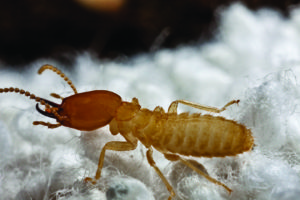Improper Landscaping Can Lead To Termite Infestations In Your Home
Even seasoned gardeners may not always be aware of how certain gardening methods can make their homes more vulnerable to termite infestations. However, there are plenty of gardening and landscaping methods that can go a long way when it comes to keeping termites out of your home. You may already be putting your house at risk for becoming a termite hotspot based on a few small factors concerning your gardening style. Luckily, you could dramatically reduce your chances of living through a grueling and expensive termite infestation by making a few small changes to your gardening style and landscaping methods.
During the spring season, gardeners enjoy planting flowers and shrubs within plant beds. Sometimes these plant beds are located several yards from the foundation of a person’s home. It is also common to find plant beds located along a home’s foundation. The plant beds that are located along a home’s foundation are often referred to as “foundation beds,” or “foundation plantings.” Unfortunately, some homes have unsightly foundations that homeowners may want to hide. Foundation beds can hide these ugly foundations with the sight of aesthetically pleasing flowers. This is why wooden flower beds are often constructed along a home’s foundation.
As you can surely guess, these foundation beds can give termites a direct route into your home. Native subterranean termites can travel long distances by tunneling through soil beneath the ground’s surface. These termites can easily locate desirable cellulose within the abundant plant life that is contained within foundation beds. Also, most foundation beds are made of wood, which only serves as another risk factor for termite infestations. It is recommended that plant beds be located at least three feet away from a home’s foundation. This distance will also benefit the health of the plants by exposing them to greater air-circulation and allowing them to receive more sunlight.
Formosan termites, which cause extreme damage in the southeast United States, can also be problematic for gardeners. Unlike native subterranean termites, Formosans do not always enter homes through soil. Formosans only require damp wood. Formosans could gain access to a home by using tree branches that hover above a roof as a transport route. However, Formosan infestations commonly start when they travel from trees and into gutters. Gutters are full of plant trimmings that contain appetizing cellulose, which Formosans can live on while reproducing in high numbers. Cleaning out your home’s gutters is a must for avoiding Formosan infestations. Use a ladder to prune tall tree branches, and you may want to consider removing tree limbs that extend directly above your home. These landscaping activities are particularly necessary following bouts of rainfall since Formosans are attracted to damp wood. Having regular termite inspections conducted on your property is the only surefire way to prevent termite infestations.
Does your home or apartment building have foundation beds bordering its foundation? How do you think a Formosan termite could travel from a tree and into the gutters of house? Could they fall into gutters while riding on leaves, or twigs? Which transport method do you think starts Formosan infestations most often?
Tags: pest control, Termite Control



